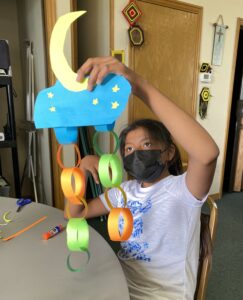Los Derechos de las Mujeres Creencias Fundacionales de la Iglesia Unida de Mujeres – Siglas en
Referencias Bíblicas:
En la familia de Cristo no puede haber entre división judíos y No-judíos, esclavos o liberados, hombre o mujer. Entre nosotros todos ustedes son iguales. Es decir, todos estamos en una relación común con Jesucristo. Gálatas 3:28 El Mensaje.
Lo mismo aplica a los esposos: Sed buenos esposos con sus esposas. Deben honrarlas, deleitarse en ellas. Como mujeres ellas carecen de algunas de sus ventajas. Pero en la nueva vida de la Gracia Divina, ustedes están a la par. Traten a sus esposas, entonces, en igualdad de condiciones para que sus plegarias sean eficaces. I Pedro 3:7 El Mensaje
Asunto: Los derechos de las mujeres son derechos humanos, enteramente protegidos en la Declaración Universal de Derechos Humanos de las Naciones Unidas.1 Las mujeres constituyen la mitad de la población mundial y tienen derecho a todos los derechos humanos en igualdad de condiciones que los hombres. La atención yace aquí en los derechos a: la educación; igualdad en el matrimonio y la vida familiar; un nivel de vida adecuado; acceso a alimentos, agua y saneamiento; empleo; y ocupación.
Razón fundamental:
El Derecho a la Educación:
El derecho a la educación está avalado por la Oficina del Alto Comisionado de Derechos Humanos de las Naciones Unidas2 en el Pacto Internacional de Derechos Económicos, Sociales y Culturales, la Convención sobre los Derechos del Niño, la Convención sobre la Eliminación de Todas las Formas de Discriminación contra la Mujer y la Convención sobre los Derechos de las Personas con Discapacidad. Además de exigir la no discriminación en el disfrute del derecho a la educación y la educación primaria universal y gratuita, las normas de derechos humanos también requieren que los Estados aborden los obstáculos particulares que enfrentan las niñas y las mujeres para acceder a la educación al igual que los matrimonios precoces, los embarazos, el trabajo infantil y la violencia aunada a ello. Garantizar la igualdad en la educación exige recursos financieros, así como una sensibilización continua sobre la importancia de la educación de las niñas.
El Derecho a la Igualdad en el Matrimonio y la Vida Familiar
La Convención sobre la Eliminación de Todas las Formas de Discriminación contra la Mujeres3 determina que los Estados partes adopten “todas las medidas apropiadas para eliminar la discriminación contra la mujer en todos los asuntos atinentes al matrimonio y las relaciones familiares”.4 El derecho a la igualdad entre hombres y mujeres en el matrimonio y la familia también están reconocidos en varios instrumentos de derechos humanos, incluidos la Declaración Universal de Derechos Humanos, el Pacto Internacional de Derechos Civiles y Políticos, la Convención sobre la eliminación de todas las formas de discriminación contra la mujer, la Convención sobre la nacionalidad de la mujer casada y la Convención sobre la nacionalidad de la mujer casada. la Convención sobre el consentimiento para el matrimonio, la edad mínima para contraer matrimonio y el registro del matrimonio. Empero, las mujeres están por detrás de los hombres en el disfrute de los derechos relacionados con la igualdad en el matrimonio y la vida familiar.
El Derecho a un Estándar de Vida Adecuado
El Pacto Internacional de Derechos Económicos, Sociales y Culturales establece el derecho a una alimentación, vestido y vivienda adecuados y a la mejora continua de las condiciones de vida como parte del derecho a un nivel de vida adecuado para uno mismo y su familia.5 Los derechos de las mujeres a la propiedad y heredar tierras y propiedades, así como trabajar con un salario digno, incluida la seguridad en la jubilación, están intrínsecamente relacionados al derecho a alcanzar un nivel de vida adecuado. Todos estos derechos están garantizados por el derecho internacional de los derechos humanos, incluido el derecho a disfrutar de estos derechos en igualdad de condiciones con los hombres, sin discriminación.
Comida, Agua, y Saneamiento
Los derechos a la alimentación, el agua y el saneamiento son cruciales para el bienestar, la dignidad y el goce de otros derechos humanos de las mujeres.6 La mala nutrición femenina en las primeras etapas de la vida reduce el potencial de aprendizaje y la productividad y aumenta los riesgos atinentes a la salud reproductiva y materna. Esto debilita los intentos de eliminar las desigualdades de género a lo largo de la vida de una mujer, lo que tiene un efecto adverso en cuestiones como el acceso de las mujeres a los recursos. Invertir en la nutrición de las mujeres mejora la capacidad general de desarrollo de un país, teniendo en cuenta el papel que despliegan las mujeres en el hogar con respecto a la producción y preparación de alimentos come el cuidado de los niños.
Empleo y ocupación
La discriminación basada en el género niega a las mujeres el derecho a la igualdad de oportunidades y de trato en materia de empleo y elección de ocupaciones laborales. Numerosos convenios de la Organización Internacional del Trabajo son pertinentes desde el prisma de la igualdad de género, incluidos convenios sobre la promoción del empleo y las condiciones de trabajo, así como sobre las categorías específicas de personas con VIH/SIDA, pueblos indígenas y tribales, trabajadores migrantes y trabajadores domésticos.7 El Convenio sobre remuneraciones núm. 100 (1951) buscaba garantizar la igualdad de pago para hombres y mujeres por un trabajo de igual valor.8 El Convenio sobre trabajadores con responsabilidades familiares núm. 156 (1981) reconocía que tanto “los trabajadores como las mujeres con responsabilidades en relación con otros miembros de su núcleo familiar cercano que claramente necesiten su cuidado o apoyo” experimentan “posibilidades restringidas de prepararse, ingresar, participar o avanzar en la actividad económica” y pidió el fin de la discriminación de los trabajadores con responsabilidades familiares.9 El Convenio sobre la Protección de la Maternidad 183 (2000)10 pedía la protección en el empleo y la no discriminación de las mujeres que estaban embarazadas o en permiso Postnatal, lo que incluía la protección de la salud de las mujeres embarazadas y lactantes, permiso posnatal adecuado, permiso en caso de enfermedad o complicaciones y garantía del derecho a que una mujer regrese al mismo puesto o a un puesto equivalente al final de su permiso de maternidad.
Posición de CWU:
Como parte del Valor Fundamental de Justicia Social de CWU (Iglesia Unida de Mujeres), que establece: “Trabajamos para una implementación más completa de la Declaración Universal de Derechos Humanos”, CWU apoya los derechos de las mujeres tal como se reconocen en las numerosas declaraciones citadas anteriormente, incluida La Declaración Universal de Derechos Humanos de las Naciones Unidas, el Pacto Internacional de Derechos Civiles y Políticos y la Convención de las Naciones Unidas sobre la eliminación de todas las formas de discriminación contra la mujer. Se alienta a los miembros del CWU a monitorear la legislación que afecta a las mujeres en todos los niveles de gobierno local, estatal y nacional y a manifestarse en contra de cualquier acción legislativa que discrimine a las mujeres y las familias. También se alienta a los miembros del CWU a colaborar con sus coetáneos en el desarrollo de legislación a nivel de gobierno local, estatal y federal que mejorará la condición de la mujer garantizando así sus derechos. CWU también apoya los esfuerzos de organizaciones que trabajan por los derechos de las mujeres a lo largo del mundo.
1 naciones Unidas, https://www.un.org, ingresada el 10 de agosto de 2023, https://www.un.org/en/about-us/universaldeclaration-of-human-rights
2 Oficina del Alto Comisionado de Derechos Humanos en las Naciones Unidas, ingresada el 10 de Agosto de 2023, https://www.ohchr.org/en/about-us/high-commissioner
3 Ibid., https://www.ohchr.org/en/instruments-mechanisms/instruments/convention-elimination-all-formsdiscrimination- against-women
4 Ibid., https://www.ohchr.org/en/instruments-mechanisms/instruments/convention-elimination-all-formsdiscrimination-against-women
5 Ibid., https://www.ohchr.org/en/instruments-mechanisms/instruments/international-covenant-economic-social-andcultural-rights
6 Ibid., https://www.ohchr.org/en/stories/2011/10/women-and-girls-and-their-right-sanitation
7 Organización del Trabajo Internacional, ingresada el 10 de agosto de 2023, https://www.ilo.org
8 Ibid., https://www.ilo.org/dyn/normlex/en/f?p=NORMLEXPUB:12100:0::NO::P12100_ILO_CODE:C100
9 Ibid., https://www.ilo.org/dyn/normlex/en/f?p=NORMLEXPUB:12100:0::NO::P12100_ILO_CODE:C156
10 Ibid., https://www.ilo.org/dyn/normlex/en/f?p=NORMLEXPUB:12100:0::NO::P12100_ILO_CODE:C183

 En una reunión reciente de ECW (Grupo de Mujeres de la Iglesia Episcopal) de la Diócesis del Oeste de Texas, la Reverenda Beth Wyndam de la Iglesia de San Nicolás en Bulverde, Texas, charlo sobre su pasión por orar a color. Dios la llamó a plantar la semilla de su pasión en una iglesia fundamentada en el gozo. Confiando en dicho júbilo, La Reverenda abrazó la gracia de la imperfección, cultivó la creatividad y encontró a Dios de diversas maneras. En consecuencia, comenzó a enseñar cómo orar a colores para aumentar la fe.
En una reunión reciente de ECW (Grupo de Mujeres de la Iglesia Episcopal) de la Diócesis del Oeste de Texas, la Reverenda Beth Wyndam de la Iglesia de San Nicolás en Bulverde, Texas, charlo sobre su pasión por orar a color. Dios la llamó a plantar la semilla de su pasión en una iglesia fundamentada en el gozo. Confiando en dicho júbilo, La Reverenda abrazó la gracia de la imperfección, cultivó la creatividad y encontró a Dios de diversas maneras. En consecuencia, comenzó a enseñar cómo orar a colores para aumentar la fe. Escrito por Lisa Bortner
Escrito por Lisa Bortner Tu nunca deberías preguntarse si las mujeres episcopales pueden cambiar el mundo. Lo ves todos los días. Pat Sanger de Park City, Utah, fue una de ellas ya que vio una necesidad en la Reserva Ute en la pequeña ciudad de Whiterocks, Utah, y actuó de manera consecuente sobre ella.
Tu nunca deberías preguntarse si las mujeres episcopales pueden cambiar el mundo. Lo ves todos los días. Pat Sanger de Park City, Utah, fue una de ellas ya que vio una necesidad en la Reserva Ute en la pequeña ciudad de Whiterocks, Utah, y actuó de manera consecuente sobre ella.